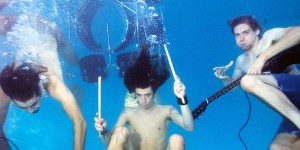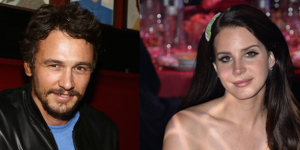 Music
Music
TRENDSPOTTING: Lana Del Rey & The Indie Trap
by Richard Trapunski
February 2, 2012
Just two days since her major label debut, Born To Die, was released to the public, the critics are ready to close the book on Lana Del Rey. Ever since the grainy video for “Video Games” appeared on its very first blog an eternity ago (i.e. June), she’s been scrutinized from every angle: her name, her lips, her father, her label, her marketing team, the nature of authenticity, hype, backlash, anti-backlash-backlash, criticism, metacriticism, blah, blah, blah. The internet-fuelled debates have fuelled on unabated for months and Lana fatigue has set in.
But it’s easy to forget that Lana Del Rey is more than just the singer that launched a thousand thinkpieces. She’s also an actual singer – a fact that often gets buried under the pile of discourse. Lana Del Rey has been responsible for gallons upon gallons of (mostly virtual) ink, not to mention hundreds of thousands of online page views, but now that her album has been released the same tastemakers that once propelled her to ubiquity are ready to shrug her off with ambivalent reviews and Hipster Runoff-style declarations of Irrelevance (if the irony is lost on anyone, it’s not that site).
Pronouncing Born To Die an anti-climactic non-starter would provide a convenient ending to this peculiar case, but the record-buying public is threatening to make that difficult. This week, the album debuted at #1 in 14 countries. Those are early results, but they provide some credence to a theory I’ve had for awhile: as “indie rock” acts slowly take over the mainstream, sooner or later the pop realm is going to figure out a way to adopt their techniques. And it seems Lana Del Rey is one of the first successful pop singers to do so.
In a piece I wrote for Spinner last year, I argued that as self-styled bands like Arcade Fire, Bon Iver and Radiohead collect industry accolades, pop acts like Robyn are finding ways to achieve mainstream success on their own terms, while major labels develop a batch of new singers with nebulous qualities like “authenticity” and “self-sufficiency” typically reserved for the so-called “indie” realm.
That was the type of artist many seemed to think they were getting when the 25-year-old’s video for “Video Games” took over the blogosphere: a stylish, self-propelled young artist with a DIY drive evident in her homemade, found-footage aesthetic and a throwback “gangster Nancy Sinatra” aesthetic evident in her old-school glamorous look and cooing, sexpot delivery. Though she may have already had the power of Interscope behind her (the major label deal was signed in July, but not announced until October), the song, and its follow-up “Blue Jeans”, courted slow-growing online attention first.
By the time she announced her upcoming album, she already had enough hype to secure a prestigious musical guest slot on Saturday Night Live, only the second ever performer (after Natalie Imbruglia) to perform on the show before the release of her debut album. The performance was a bit of a trainwreck – clearly nervous, Del Rey couldn’t seem to control her pitch or figure out what to do in the breaks between singing. The criticism was harsh and immediate, but it did its job, launching Lana Del Rey beyond the niche world of internet criticism and turning her into somewhat of a household name. Good or bad, it’s hard to remember the last time an SNL segment, musical or not, caused as much water-cooler buzz.
The LDR interest that was already building exploded post-SNL, raising even more suspicion about her not-so-hidden past as a blonde-haired, casually-clothed, lighter-lipped Brooklyn open-mic regular named Lizzy Grant. It shouldn’t have come as a shock that Lana Del Rey was a created persona – pop music is by nature performative and requires a layer of artifice. But by appealing first to the indie blogs that worship at the alter of supposedly soul-bearing “real” artists like Fleet Foxes and Bon Iver, Lana Del Rey accidentally transposed a set of expectations of authenticity to music that doesn’t abide by them.
Nobody raised too much ire when Stefani Germanotta donned her Lady Gaga costume or when Katy Perry dropped her Christian-rock styles to become an animated coquette sexpot, but Lana Del Rey was never thought to be a part of their group because of how it was marketed. It appears that’s the risk inherent in appealing to the Pitchfork crowd first.
That’s why Lana Del Rey plays as such an illuminating case study for indie-marketed pop singers. Though they’ve tried, few pop singers have been able to achieve the same results with the same strategy. Like LDR, UK actor-turned singer Natalia Kills (also on Interscope), for instance, went through earlier false-start incarnations under her given name, Natalia Cuppicini, and the pseudonym Verbalicious. She returned with a much more style-focused “Noir Pop” aesthetic that included a self-directed web-series, but so far hasn’t found the runaway success she and her label had hoped.
But success breeds imitators, and if the early sales have anything to say it’s that, despite all the negative attention, Lana Del Rey has made her impact. Weary we all may be, but it’s time to get used to her.
Tags: Music, News, Lana Del Rey, Trendspotting





